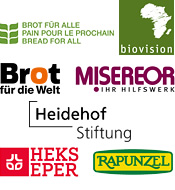More with less: boosting yields with the System of Rice Intensification
Rice is a staple food for over three billion people worldwide. By 2050, it is predicted that there could be another billion rice eaters in Asia. For this reason, scientists are working to breed new varieties, which promise higher yields. The traditional remedy in this area – greater output from higher inputs – was fundamentally questioned by a new method of cultivation developed in the early 1980s by French Jesuit priest and agronomist Henri de Laulanié. After many years of observation in field trials with small-scale farmers in Madagascar, he came up with the System of Rice Intensification (SRI); a system that requires less input but achieves greater output.
SRI breaks with all established rules of wet rice cultivation. Firstly, the seedlings are transplanted at the two-leaf stage (between 8 and 12 days old) instead of waiting for one month. Secondly, the single seedlings are planted with an increased spacing of around 25 cm rather than planting them close together in bunches. With this method, seedlings do not compete for nutrients, space and sun, and develop stronger roots and more tillers. Thirdly, instead of continuously flooding fields to prevent weed growth, plants only receive the ideal amount of water and the soil is temporarily kept dry. This favors soil microbial development and reduces methane emissions. Since weed has to be controlled manually using a mechanical hand tool, the soil is well aerated, thereby improving plant growth. Finally, organic manure and compost is used for fertilization. Thanks to SRI, farmers in Madagascar were able to increase their yields from an average of two tons of rice per hectare to eight tons, with only one tenth of the amount of seeds required.
Since 1997, Norman Uphoff and other scientists at Cornell University who had observed the success of SRI in Madagascar have been committed to spreading and documenting the method. With the support of farmers’ organizations and NGOs, farmers around the globe have adapted SRI principles to their climate zones and local conditions, and have often been rewarded with record yields. Switching to SRI requires a lot of courage, especially in areas where the survival of families depends on the harvest. The method requires a lot of work and knowledge, for example it is difficult for many small-scale farmers to irrigate the fields at the perfect moment. Nevertheless, 10 million small-scale farmers in over 55 countries in Asia, Africa and Latin America are now applying SRI. In China and India, authorities are already promoting the method.
“I think that SRI is something unprecedented, as very few previous innovations have shown such a huge productivity windfall. And just as surprising is the fact that we have been able to proceed on such an international scale with so little support and so much opposition,” says Uphoff. Scientists from the International Rice Research Institute in the Philippines argue the method is too labor-intensive and yield increases are not sufficiently verified. Seed and agrochemical companies are also not fond of a method that lures away clients by reducing the need for seeds, fertilizer and pesticides.
But SRI is spreading rapidly: Hundreds of studies have been published and innovative farmers have extended the principles to other crops such as maize, finger millet, mustard and eggplant, achieving stronger plants and higher yields.









